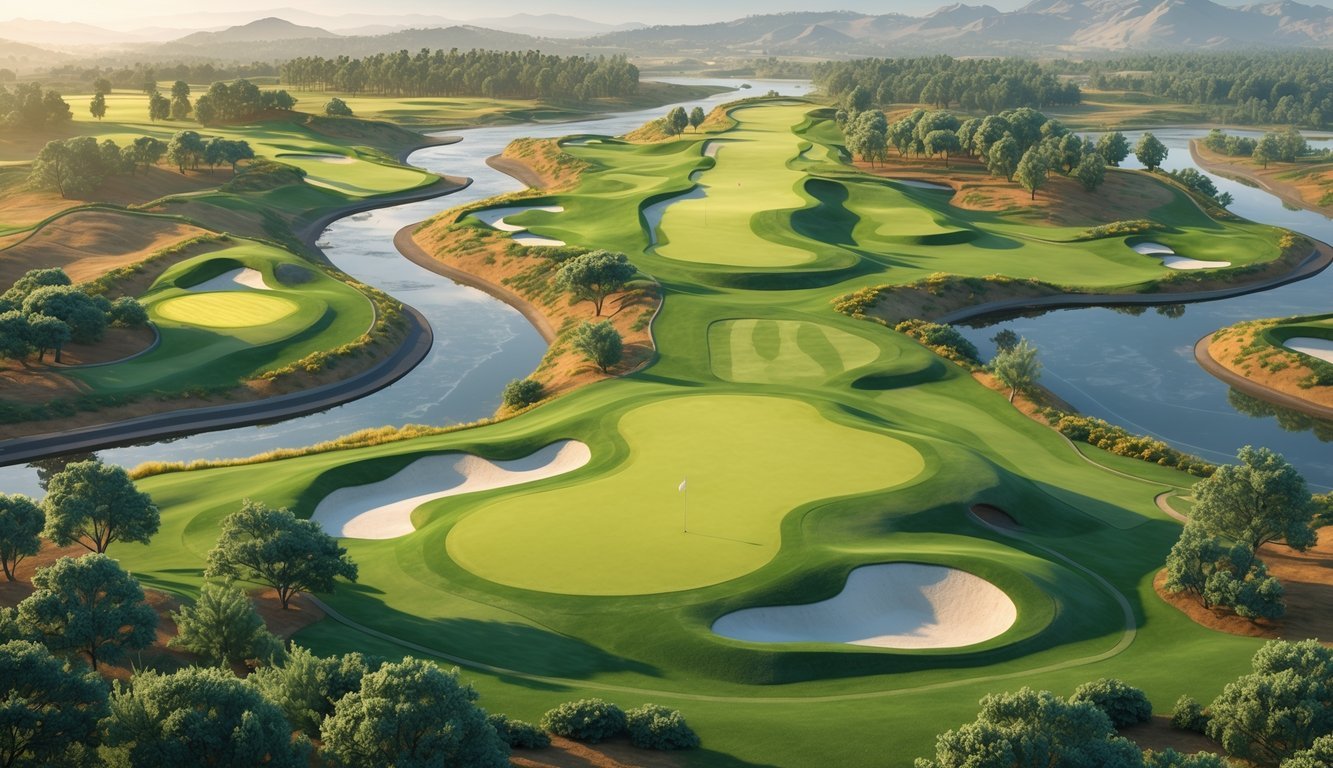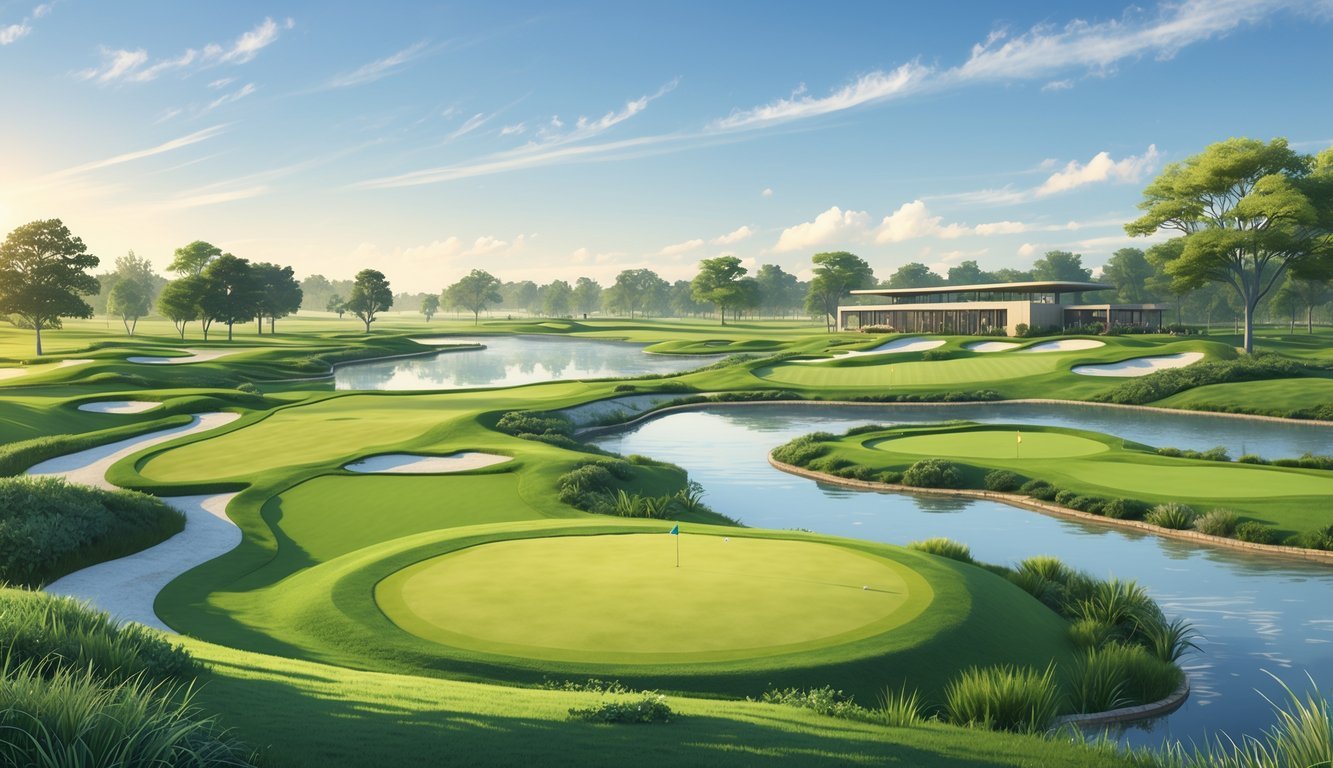PsychNewsDaily Publishers
100 Summit Drive
Burlington, MA, 01803
Telephone: (320) 349-2484
PsychNewsDaily Publishers
100 Summit Drive
Burlington, MA, 01803
Telephone: (320) 349-2484
Golf course design balances strategy, aesthetics, and challenge, utilizing natural terrain and modern trends to create enjoyable experiences for players of all skill levels.

Golf course design really shapes how you experience the game. It’s all about balancing strategy, beauty, and challenge. Good design takes advantage of the land’s natural features, creating a fair but interesting course that tests your skills and keeps you coming back.
Designers think about everything—hole layout, terrain, even how the course feels for different players. They want everyone to enjoy it, whether you’re a beginner or a pro.
Look closely, and you’ll spot how thoughtful design brings variety to your shots. Hazards are challenging but not unfair, and the course flows smoothly from hole to hole.
Modern courses often blend tradition with some fresh ideas. Once you get the basics, you’ll start to see why every course feels a bit different.

Designing a golf course means balancing a bunch of factors to keep play engaging and fair. History, strategy, key design elements, and the environment all play a part in how a course looks and feels.
Golf course design has changed a lot over time. Early courses were pretty simple and followed the land’s natural shape, with hardly any earthmoving.
Architects like Donald Ross and Alister MacKenzie set early standards by mixing nature with clever strategy. Then, in the 20th century, designers like Arnold Palmer and Jack Nicklaus added modern touches.
They focused on playability for different skill levels. The American Society of Golf Course Architects (ASGCA) set consistent design standards.
Today, designers like Tom Fazio and Tom Doak mix tradition with technology to fit courses into all sorts of landscapes. You can spot history in the routing, hazards, and variety on famous courses like Pebble Beach.
Good golf course design challenges you, but it shouldn’t feel unfair. Designers want you to have choices on every hole, so they add options in routes, hazards, and shot type.
Courses usually have multiple tee boxes, so both average golfers and low handicappers can enjoy the game. Designers place bunkers, water hazards, and roughs carefully to punish risky shots but reward smart decisions.
The shape of fairways and greens tests your approach shots. For example, narrow fairways and tricky greens force you to think about every shot. The goal is always balancing fun and challenge.
A golf course layout comes down to routing, hole variety, and flow. Routing connects the holes and uses the terrain in smart ways.
Good routing cuts down on walking and uses hills or valleys to make things interesting. Variety comes from mixing up hole lengths and shapes.
You might face a long par-5, a short par-3, or a sneaky par-4. This keeps things exciting and tests different shots.
Designers shape greens with slopes and contours to make putting a real test. Bunkers and hazards force you to focus and hit precise shots.
Natural terrain plays a big role, making each hole feel unique.
| Element | Purpose | Example |
|---|---|---|
| Routing | Efficient flow, terrain use | Two loops of 9 holes |
| Hole Variety | Keeps play interesting | Mix of par 3, 4, and 5 |
| Bunkers/Hazards | Adds challenge and strategy | Fairway bunkers, water |
| Greens | Test putting skills | Undulating surfaces |
Your experience on a golf course depends a lot on how it fits the environment. Designers study the landscape, climate, and native plants to make courses feel like a natural part of the land.
Using local terrain cuts construction costs and keeps the natural beauty. It also helps with drainage and sustainability.
Aesthetics really matter. Courses by Alister MacKenzie, for example, are famous for their beauty.
Trees, water, and good views add to your enjoyment. Green maintenance, fairway width, and turf type are all chosen with the local climate in mind, so the course stays playable year-round.
Designers want you to look forward to coming back.

When you design or update a golf course, you have to think about how new ideas and technology change the game. Safety and accessibility matter, too, along with how your course fits into the bigger golf world.
These days, golf courses often blend natural landscapes with new tech. You might see native grasses instead of traditional turf to save water and improve conditions.
Many courses renovate tee boxes for modern equipment, letting them adjust distances for different players. Creative bunkering shapes both the look and the strategy.
Owners sometimes bring in consulting designers to reposition features and improve flow. Renovations also mix in wellness and lifestyle trends.
Courses in places like Mexico and the Bahamas are picking up these ideas to draw tourists and locals.
Safety is a big deal in course design now. You want the layout to reduce injuries from tricky footing or blind shots.
Designers create clear sight lines and keep safe distances between tees and fairways. Accessibility is improving, too.
More courses add wider paths and easy-to-reach tee boxes, making it easier for golfers of all ages and abilities. You might notice better cart routes, smoother surfaces, and helpful signage.
Planning for safety and accessibility creates a welcoming vibe and helps owners meet regulations.
An award-winning course gets a lot of respect in the golf industry. Winning design awards can boost your course’s profile and bring in new golfers.
To win, your design has to challenge players but not feel unfair. Awards look at how creative the layout is and how well it uses distance.
They also care about environmental responsibility, especially in places like Michigan or coastal regions. Staying up to date with trends gives you an edge.
Connecting with leaders in golf design helps you learn about new materials, construction methods, and what players want. Getting recognized can increase memberships, bring in tourists, and help your course stand out in modern golf.

Designing a golf course takes certain tools, skills, and steps. Here’s a look at what you’ll need to get started.
Golf course architects usually use CAD (Computer-Aided Design) software for detailed plans. Some also use 3D modeling tools to see the terrain and layout.
Many designers work with GIS (Geographic Information Systems) to analyze land features and make sustainable choices.
Start by really studying the land you want to use. Check out its shape, slope, and soil.
Then, sketch your ideas on paper. Use software or team up with a pro to refine your plan.
Remember to consider your budget, environmental impact, and local rules from the start.
Most golf course architects have a degree in landscape architecture, civil engineering, or something similar.
Experience in golf course construction or turf management helps, too. Many learn on the job by working with experienced designers.
A good design balances challenge and playability for every skill level.
Important parts include fairways, greens, bunkers, water hazards, and natural features. Good drainage and turf quality keep the course playable.
First, you clear and shape the land to create fairways and greens.
Next comes installing irrigation and drainage systems.
Finally, you plant grass and add finishing touches like bunkers and paths. Depending on the project, this can take months or even years.
Designers often choose native plants, which need less water.
They set up irrigation systems carefully, aiming to avoid waste and keep local water sources safe.
A lot of courses also try to support wildlife habitats and cut back on harmful chemicals.